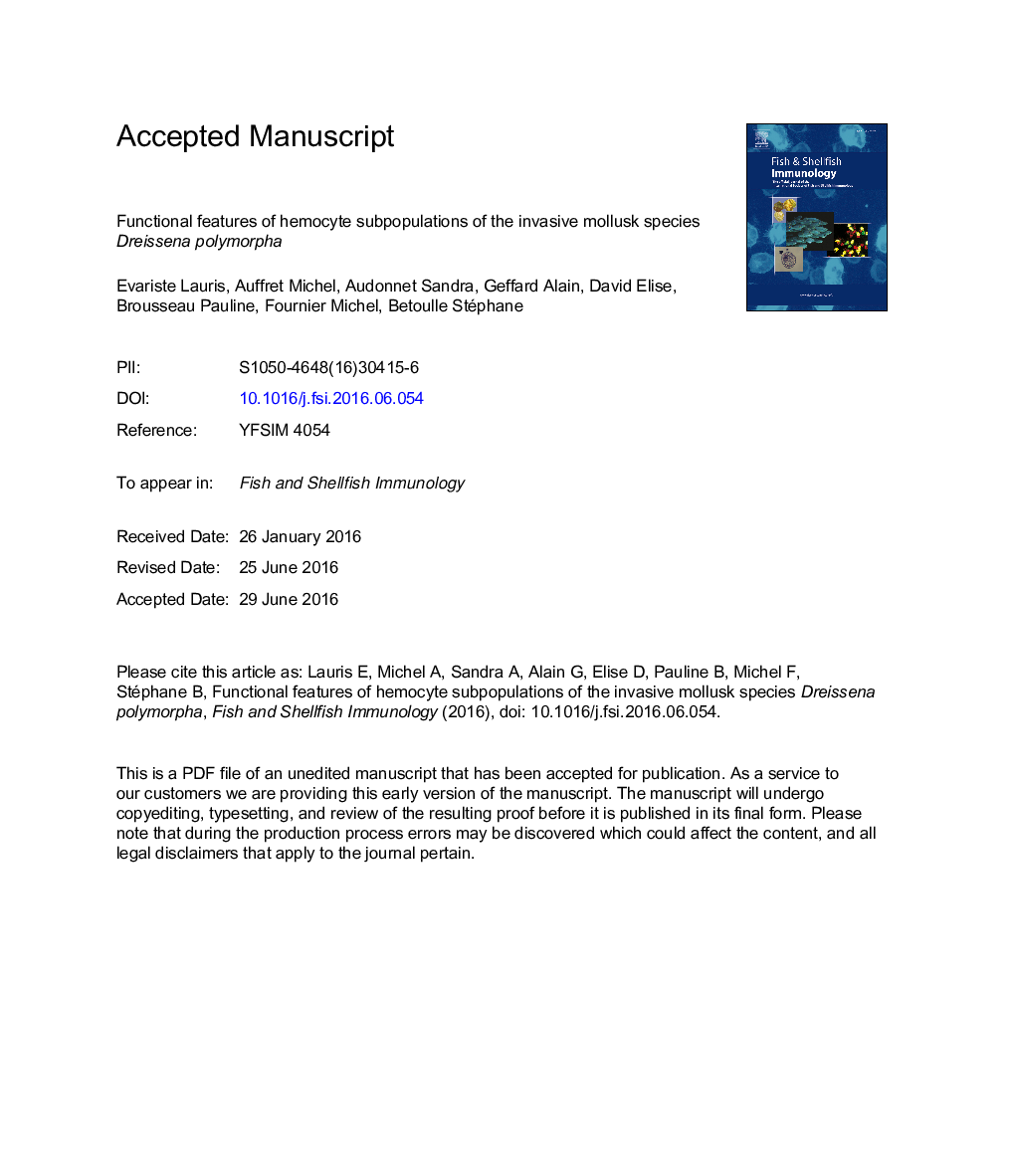| Article ID | Journal | Published Year | Pages | File Type |
|---|---|---|---|---|
| 8499020 | Fish & Shellfish Immunology | 2016 | 40 Pages |
Abstract
Dreissena polymorpha circulating hemocytes populations were characterized by a combination of structural and functional analysis. Assessments were performed during two contrasted physiological periods for mussels (gametogenesis and spawning). Three hemocyte types were identified as hyalinocytes and blast-like cells for agranular hemocytes and one granulocyte population. Flow cytometry analysis of hemocytes functionalities indicated that blast-like cells had low oxidative and mitochondrial activities and low lysosomal content. Hyalinocytes and granulocytes are fully equipped to perform innate immune response. Hyalinocytes exhibit higher oxidative activity than granulocytes. Such observation is not common since numerous studies show that granulocytes are usually cells that have the highest cellular activities. This result demonstrates the significant functional variability of hemocyte subpopulations. Moreover, our findings reveal that spawning period of Dreissena polymorpha was associated with an increase of hyalinocyte percentage in relation to low levels of biological activities in hemocytes. This reduction in hemocyte activity would reflect the important physiological changes associated with the spawning period of this invasive species known for its high reproductive potential.
Keywords
Related Topics
Life Sciences
Agricultural and Biological Sciences
Aquatic Science
Authors
Lauris Evariste, Michel Auffret, Sandra Audonnet, Alain Geffard, Elise David, Pauline Brousseau, Michel Fournier, Stéphane Betoulle,
